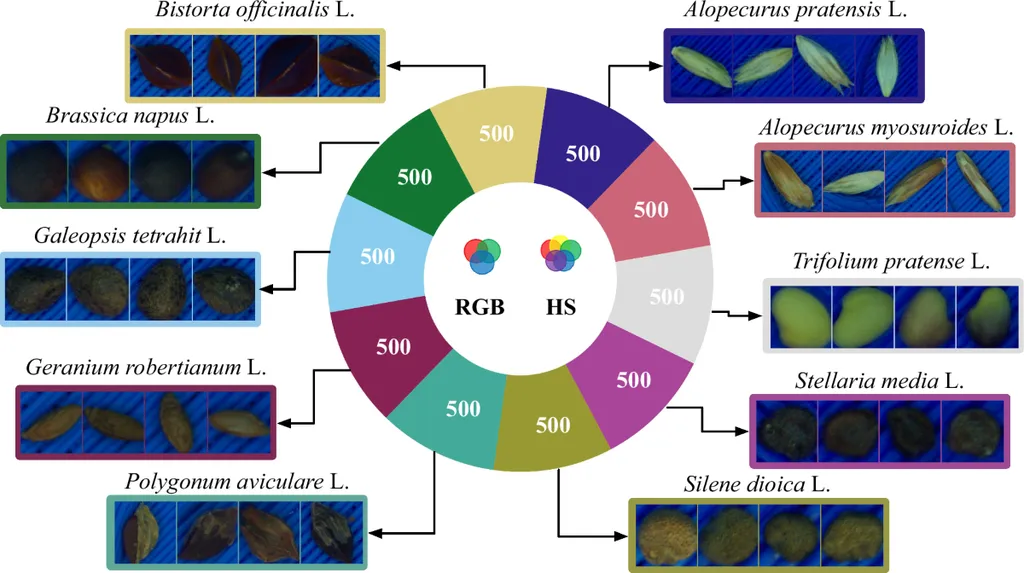In the heart of agricultural innovation, a new dataset is set to revolutionize how we classify seeds, with implications that stretch far beyond the farm. Researchers, led by Maksim Kukushkin from Martin Luther University Halle-Wittenberg, have compiled a bimodal seed image dataset that captures both visible and near-infrared spectral information. This dataset, published in the journal ‘Nauchnye Dannye’ (Scientific Data), is poised to unlock new potential in agriculture, medicine, and remote sensing.
The dataset comprises paired RGB and hyperspectral images for 10 plant species, making it one of the largest of its kind. “We aimed to bridge the gap in the agricultural domain by providing a high-quality, bimodal dataset,” Kukushkin explains. “This dataset allows for a comprehensive analysis of seeds, considering their spectral, spatial, and morphological properties.”
The significance of this dataset lies in its potential to advance deep learning models for multi-class seed classification. By benchmarking several deep learning models, the researchers have demonstrated the dataset’s efficacy in improving classification accuracy. This advancement could lead to more efficient and precise agricultural practices, benefiting the energy sector by optimizing biofuel production and crop management.
The implications of this research extend beyond immediate applications. As Kukushkin notes, “This dataset opens new avenues for research and applications, particularly in areas where spectral information is crucial.” The ability to classify seeds with high accuracy can lead to better seed sorting, improved crop yields, and enhanced biofuel production. In the energy sector, this could translate to more efficient and sustainable energy solutions.
The dataset’s potential is not limited to agriculture. In medicine, the spectral information could aid in the identification of plant-based compounds with therapeutic properties. In remote sensing, it could enhance the monitoring of vegetation health and biodiversity. The versatility of this dataset makes it a valuable resource for researchers across various fields.
As we look to the future, the bimodal seed image dataset represents a significant step forward in agricultural technology. Its impact on the energy sector, in particular, could be profound, driving innovations in biofuel production and sustainable energy practices. With this dataset, researchers and industry professionals alike have a powerful tool to explore the intricate properties of seeds and harness their potential for a more sustainable future.
In the words of Kukushkin, “We hope this dataset will inspire further research and applications, ultimately contributing to a more efficient and sustainable agricultural landscape.” As we stand on the brink of these advancements, the possibilities seem as vast as the spectral information captured in this groundbreaking dataset.

